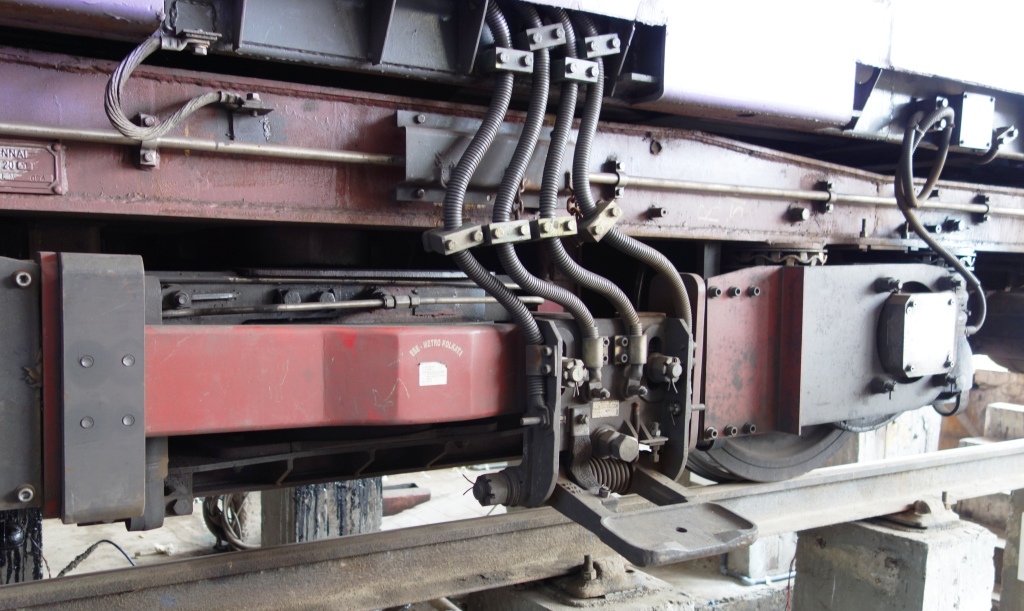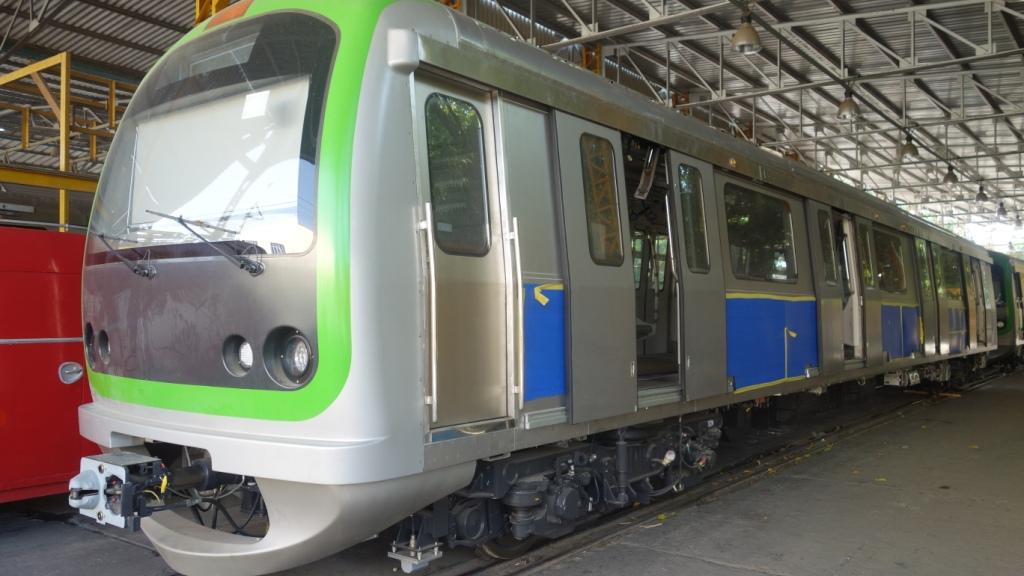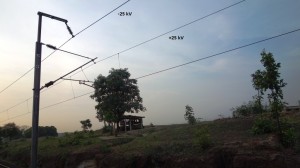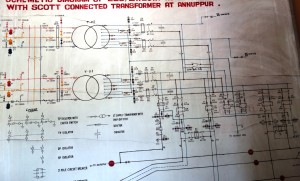Traction Distribution
The most important challenge of Traction Distribution is to supply electric power to running Locomotive. Many systems have been evolved over the period based on power handling technologies available at that time and now 25 kV traction power supply is predominantly prevailing over Indian Railways. Transfer of power from stationary equipment to running locomotive is either through overhead equipment or third rail. Third rail is preferred for low voltage application up to 750V and where line is either underground or elevated to ensure avoidance of accidental touch by human beings. Higher AC voltage is preferred for two reasons namely
- Current is less making current collection simple. A current of 3500A is required at 1500V DC as compared to 200 A at 25kV AC for almost same load
- Protection system is simplified due to natural zero in AC waveform.
Principle Norms for selection of Traction power supply
- Electrical Safety: Ensuring Minimum Electrical Clearances, Safety to human and living beings
- Transmission Efficiency: Higher the voltage lowers the transmission and distribution losses, reduced size of conductor and associated size of over head equipment
- On Board Power Control Technologies to best suit the traction power supply
DC Power Supply 750V DC:
- Suitable for underground network with third rail current collection,
- Size of the tunnel bore optimized due to no overhead equipment. Delhi Metro has gone for 25kV system in the tunnel as well by redesigning clearances.
- Adopted by Kolkata Metro Railway in 80s with continuation on extended elevated network also. Now followed by Banglorue Metro system mainly on aesthetic reason avoiding tree cutting and trimming.
- Preferred system when power control was limited to DC traction system only
DC Power Supply 1500V DC:
- Adopted for Overhead Mumbai Suburban system in 1925 when power control for traction system limited with DC only
- With unlimited option of power control opened up for working with any voltage system, possible conversion from DC to 25kV AC became feasible. Rolling stock was required to work on DC as well AC traction power supply system and AC-DC rakes were introduced. WR converted to AC system and CR is under progress.
- 1500 V DC system will go into History shortly.
DC Power Supply 3000V DC:
- Adopted for Overhead Kolkata Suburb system in 19 when power control for traction system limited with DC only
- With Indian Railway deciding to go for 25kV AC system, 3000V DC system was first to converted to 25kV AC in the year.
- The system is in History only.
AC Power Supply1 5kV, 16⅔ Hz
- This was original AC system because of the use of limited commutation ability of early single-phase variable speed AC Motor
- Never used over Indian Railways
AC Power Supply 25kV AC :
- This is now the World Standard for Main line and Sub-urban Railways. For heavy traffic density, 25kV AC even for underground/elevated network is a preferred traction supply.
- This could be possible because of the development in Power Electronics and Insulating Material.
AC Power Supply 50kV AC :
- Used in dedicated heavy haul network
- Different than 2x25kV auto-transformer supply where locomotive receives 25kV.
- Locomotive also received power supply at 50kV
- Not followed in India
AC Power Supply 2*25kV:
- Transmission is at 50 kV and distribution at locomotive end is at 25kV
- Advantage of energy efficiency, voltage stability at furthest end
- Lesser number of neutral sections thus not destructing the attention of loco pilot for switching off-on frequenctly
- With supply covering about 40 Km each direction, load factor is better
- This is achieved by using Auto-transformer at TSS, SPP and SP and return conductor thus adding cost to the system
Comparing DC vs AC Traction
| DC system | AC System |
|
|
Features of Current Collection by Over Head Equipment
- Overhead Equipment consists of contact wire running over the Railway Track.
- Contact wire is supported by catenary through droppers.
- Assembly of contact and catenary is held flexibly by cantilever assembly.
- Cantilever Assembly is mounted on a mast through insulators
- Mast is dug through a properly designed foundation
- Contact and catenary is kept under tension to take care of thermal expansion and sag through auto tension device.
- One length of contact wire is limited to 1.3Km and transitioned without any joint
- Entire OHE network is sectioned for fault localization, isolation for maintenance, distribution of power of different phases etc.
To summarize, 25 kV AC OHE consists of
- Power Supply Systems
- Foundation
- Mast
- Cantilever
- Contact and Catenary Wire
- Sectioning and Sub-sectioning
- Neutral Section
- Automatic Tensioning Devices
- Schedule of Dimensions





[…] two of the Divisions. I had a tremendous amount of satisfaction in solving a number of failures in Traction Distribution Equipments, and a sense of achievement I could not equal in all other assignments […]
Is return conductor needed in 2×25 KVA system OHE if yes what is specifications & quantity /KM please advise.